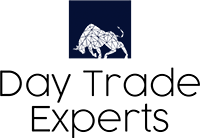Duke professor Harvey says coronavirus vaccine will end U.S. downturn and the positive yield curve is an upbeat sign.
Last summer, when the U.S. had just notched a decade of economic recovery and unemployment stood at 3.7%, Campbell Harvey, a professor of finance at the Fuqua School of Business at Duke University, predicted a recession for 2020 or early 2021.
Why? Because the yield on the three-month Treasury bill was higher than the yield on the five-year Treasury note for the entire second quarter of 2019. That “inverted yield curve” had been the harbinger of the previous seven recessions. Harvey first identified the inverted yield curve’s predictive power in his 1986 doctoral dissertation at the University of Chicago.
So, here we are in what could be the deepest recession since the Great Depression, triggered by a global pandemic and governments’ unprecedented actions to prevent its spread. What does Harvey expect for the U.S. economy now? He sees this recession hitting deep but being short — with the economy in recovery mode by the end of this year.
“In the global financial crisis [in 2008-09], we never could tell when it was going to end,” he said in a telephone interview. This time, he said, “the cause is clear — it’s a biological event, and the solution is also clear: another biological event.”
He doesn’t anticipate the V-shaped recovery that Wall Street touted a few weeks ago. “I think it’s more what I call the ‘skinny U,’ because I do believe that we will have a vaccine by the first quarter [of 2021],” he said.
Harvey’s recession call was more pessimistic than most forecasters at the time, who saw no recession for this year, either. Would the recession have happened without the pandemic?
“We’ll never know the counterfactual,” he said. “The inversion was moderate, so I think that we were headed towards a mild, short recession. Then the COVID-19 pandemic struck and changed everything.”
Indeed. Harvey considers the novel coronavirus an accelerant of underlying trends resulting in this recession, which he thinks began in the first quarter of 2020. We’re going through the worst of it right now. “Think of the second quarter as the worst quarter of [GDP] growth that the U.S. has ever experienced, historically,” he said. “It could be 30% negative on an annualized basis. The third quarter, it’s hard to imagine getting worse than where we are.”
Harvey adds that he can see some green shoots just in time for winter, as coronavirus treatments emerge and the world gets closer to testing and deploying a vaccine. “A vaccine is the solution in terms of reducing all of the uncertainty. A vaccine means ‘all clear,’” he said. ”If we’ve got some pharmacological solution that reduces the risk of death, that’s also incredibly helpful.”
US Stocks Set to Open Higher Monday

U.S. stock-index futures pointed to gains on stocks at Monday’s open as Federal Reserve Chairman Jerome Powell said that Americans need to prepare for a tough road ahead in the aftermath of the COVID-19 pandemic but said he wouldn’t bet against the domestic economy’s ability to persevere through the most significant public-health crisis in more than a century.
Stocks closed out last week lower, with the Dow down 2.7%, the S&P 500 losing 2.3% and the Nasdaq 1.2% lower.
In an interview with CBS’ “60 Minutes” program, which aired Sunday, Powell said that the road to recovery for the U.S. may take a while and consumers may lack conviction until efforts to find a vaccine for the illness derived from the novel strain of coronavirus are successful.
“In the long run and even in the medium run, you wouldn’t want to bet against the American economy,” Powell said during the television interview.
World Markets & The US

Major markets in Asia were little changed in Monday afternoon trade as U.S. Federal Reserve Chairman Jerome Powell said the economy stateside may need a coronavirus vaccine to fully recover.
Mainland Chinese stocks nudged higher by the afternoon, with the Shanghai composite down 0.61% while the Shenzhen composite shed 0.245%
The Hang Seng index in Hong Kong also dipped 0.4%.
Japan’s Nikkei 225 added 0.44% in afternoon trade while the Topix index rose 0.17%. South Korea’s Kospi also advanced 0.61%.
Meanwhile in Australia, the S&P/ASX 200 gained 1.21%.
Overall, the MSCI Asia ex-Japan index added 0.18%.
Oil prices rose in the afternoon of Asian trading hours on expectations of demand pick-up and supply cuts. International benchmark Brent crude futures rose 2.77% to $33.40 per barrel. U.S. crude futures also added 3.7% to $30.52 per barrel.
Investors watched for reaction to Powell’s recent comments to CBS’ “60 Minutes.”
“Assuming there’s not a second wave of the coronavirus, I think you’ll see the economy recover steadily through the second half of the year,” the central bank chief said. However, he added that “for the economy to fully recover … that may have to await the arrival of a vaccine.”
“There is no question that the outlook remains grim,” Vishnu Varathan, head of economics and strategy at Mizuho Bank, wrote in a note. “US-China friction and the inability to plot a path of recovery from COVID leave much up in the air; and arguably, a little much reliance on policy silver bullets to deliver respite.”
